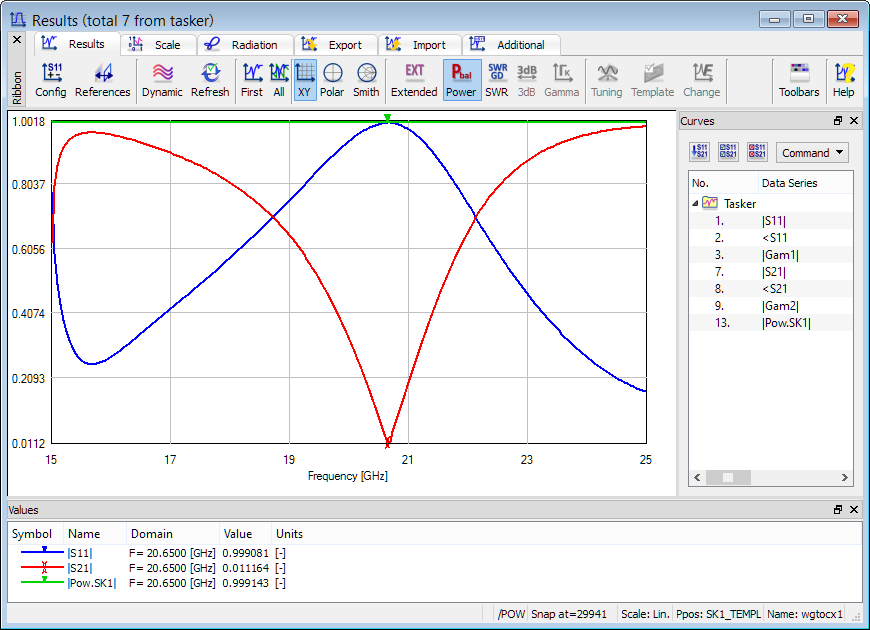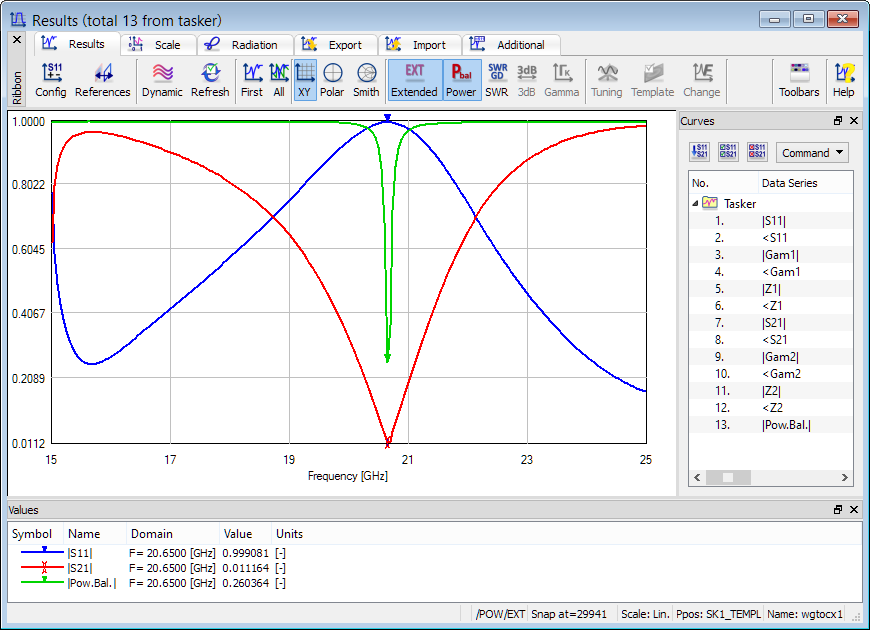Power Balance
Power balance post-processing is active for S-Parameters post-processing and allows one to calculate the balance between power entering and leaving the N-port circuit through the ports. In other words, the power balance post-processing gives the user the information about what part of the power injected into the circuit is dissipated in all defined ports. In QuickWave the power balance can be observed in the Results window and have two different definitions depending on whether the Extended Results option is off or on.
With Extended Results off, we do not extract the information about the phase of the reference impedance at each port. In such a case the power balance is calculated as:
Pow.Sk1= sqrt[(S11)2+(S21)2+..+(SN1)2]
In the case of imaginary or complex reference impedances (like for example in waveguides below the cutoff frequency) this formula does not describe the actual balance of input and output power. With Extended Results on, the software directly integrates power flow through the ports. The power balance curve is then called Pow.Bal and denotes:
a square root of
the ratio of total output power (sum of power dissipated in all output ports of the S-Parameters post-processing)
to
the reference input power (power actually delivered into the circuit from the input port of the S-Parameters post-processing)
Power Balance results contain one curve of name |Pow.SK1| for S-Matrix results and Extended Results off.
Power Balance results contain one curve of name |Pow.Bal| for S-Matrix results and Extended Results on.
Power Balance results contain one curve per port of name |Pow.SMNN| for full S-Matrix results.





